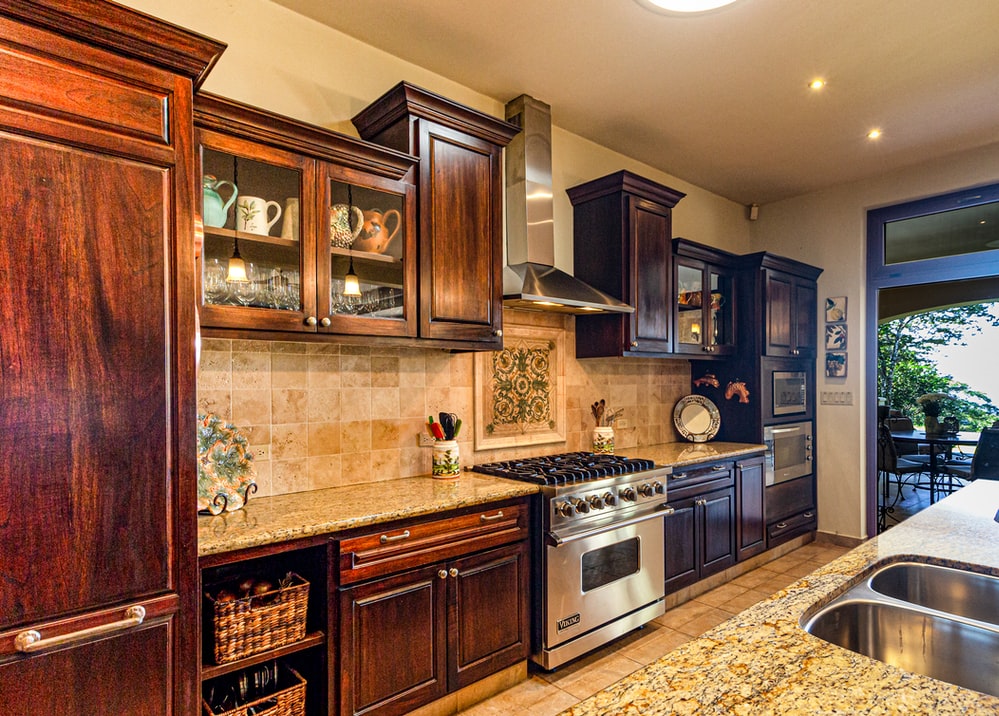Here is some information about the characteristics and some pros and cons of different counter top materials. If it is time to renovate your kitchen or bathroom, please fill out the online questionnaires for bathrooms and kitchens and a representative will be in touch ASAP. We hope this is helpful and look forward to hearing from you soon!
Quartz
Long lasting quartz comes in many colors and is pre-finished. Quartz has become the fastest growing counter top material in the United States and Europe. With the distinctive depth and glimmering radiance of natural stone, it offers easier maintenance than Granite, Marble or Limestone. Only three natural materials—diamonds, topaz and sapphires—are harder than quartz, giving quartz surfaces strength that is less susceptible to scratches, chips and cracks. Not only will quartz hold up over the years, its natural looks will not go out of style. Additionally, quartz colors and patterns are more consistent then natural stone, which means homeowners can rely on showroom colors to be true to what is delivered and installed.
Granite
Due to its inherent strength and scratch resistance, granite is ideal for kitchen counter tops and flooring where significant surface abuse is expected. Like marble, granite is naturally made up almost entirely of crystals polished to achieve a high-gloss finish. This polished finish allows for the enjoyment of granite’s exceptionally vivid colors. Granite is not impervious to scratching or staining. Sealers should always be used on stone to slow down the absorption of water and oil-based stains. Scratching may occur if another piece of granite or metals are roughly handled on the surface. Stainless steel cutlery will dull when used directly on granite. Concentrated acids found in some household cleaners can also etch the surface, even though non-granite stones can more easily be etched by acids commonly found in food and drink. If allowed to stay on the surface long enough, rings left behind by such beverages as citrus and wine can be permanent.
Marble
Marble’s beauty and special attraction lie in its tremendous variety of colors and patterns, as well as the unparalleled ability of its crystals to be polished to a high gloss. The rich, random veining of most marbles is nature’s unique work of art: no two pieces will ever be exactly alike, making it essential that you choose the specific slab to be used in your home remodeling project. We do not recommend you choose marble by looking at samples. The visual depth of marble, as you peer into it, is breathtaking, and its crystalline nature makes many marbles translucent. However, that same crystalline nature makes marble much more susceptible to staining than other stones, so in most instances it is better suited to bathrooms than kitchens. Marble should be sealed 2 to 3 times before use. This is time consuming but is necessary for long lasting durability and should be done.
Corian
On the market since the early 1970’s, durable and versatile Corian has come a long way, with an amazing array of colors really worth looking into. Carrying a 10-year warranty, Corian is a terrific product excelling in ease of cleaning, maintenance and care.
Tile
Used on floors, walls, and counter tops all over the world for literally thousands of years, tile is highly durable and is available in a nearly countless variety of colors, shapes, sizes and materials, including ceramic, porcelain and glass.It’s especially important to use the right grout on tile kitchen and bathroom counter tops , backslashes, and floors. Tile needs to be scored or cut which can create additional noise, dust, and time requirements. Durable tile installation requires a properly prepared substrate or backing material, which varies by area of use and material used. Skilled craftspeople take pride in the quality of tile work. It can be a beautiful, durable, personalized surface material when chosen and installed well.
Slate
Typically valued for its natural cleft surfaces and wide color variation, the grayish or earthy colors of slate are ideal to create a rustic, natural look in almost any environment. Due to its natural slip resistance and water repellent characteristics, slate is ideal for wet areas such as around tubs, showers, or entryways. Attractive contrasts can be created when slate is combined with glass or sophisticated metal accents. Slate should be sealed 2 to 3 times before use. This is time consuming but should be done.
Travertine
Travertine’s allure lies in its earthy character and colors. The layers of this sedimentary stone often reveal themselves to the observer as a bird’s eye view of a desert plain or salt flat. This characteristic does a remarkable job of expressing nature across wide expanses of flooring or counter tops, especially when chosen in the popular 16-inch x 16-inch or 18-inch x 18-inch tiles. Travertine is a relatively soft material, making it unsuitable for very heavy wear applications.
Limestone
The beauty is in Limestone’s “soft” appearance and the “warmth” of its colors. Occasionally, limestone can contain visible fossils—ancient shells or skeletons of sea creatures—providing an added dimension of history and charm. In general, limestone is best suited for bathrooms and areas with less foot traffic, where its softer look and feel may best be appreciated. Though limestone may absorb liquids or staining substances more quickly than other stones, proper sealing and cleaning can minimize the problem, ensuring life-long splendor. Limestone should be sealed 2 to 3 times before use. This is time consuming but should be done.
Formica
Around since 1913 and still going strong, Formica provides a huge range of color choices, including many new granite and slate patterns. Formica can scratch, but has the advantage of being more reasonably priced than other materials.
We hope this information has been useful. If it’s time to renovate your kitchen or bathroom, please fill out the online questionnaire and a representative will be in touch ASAP. We look forward to hearing from you soon!
